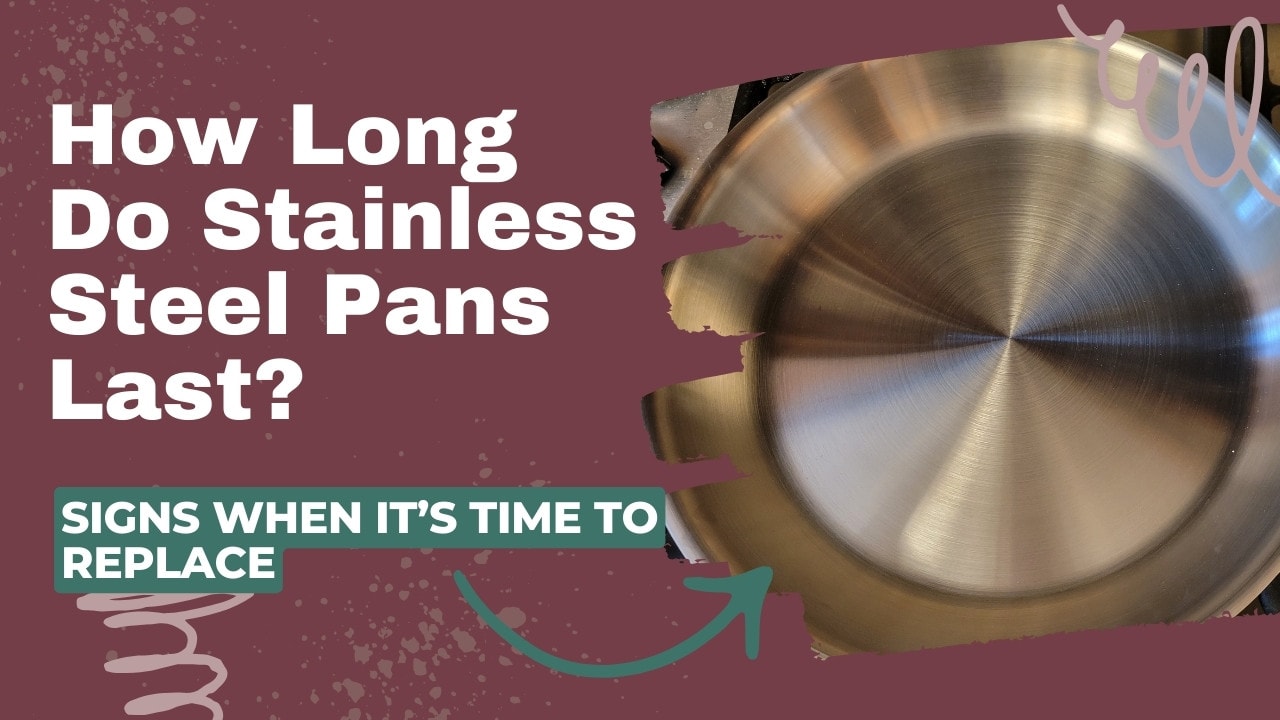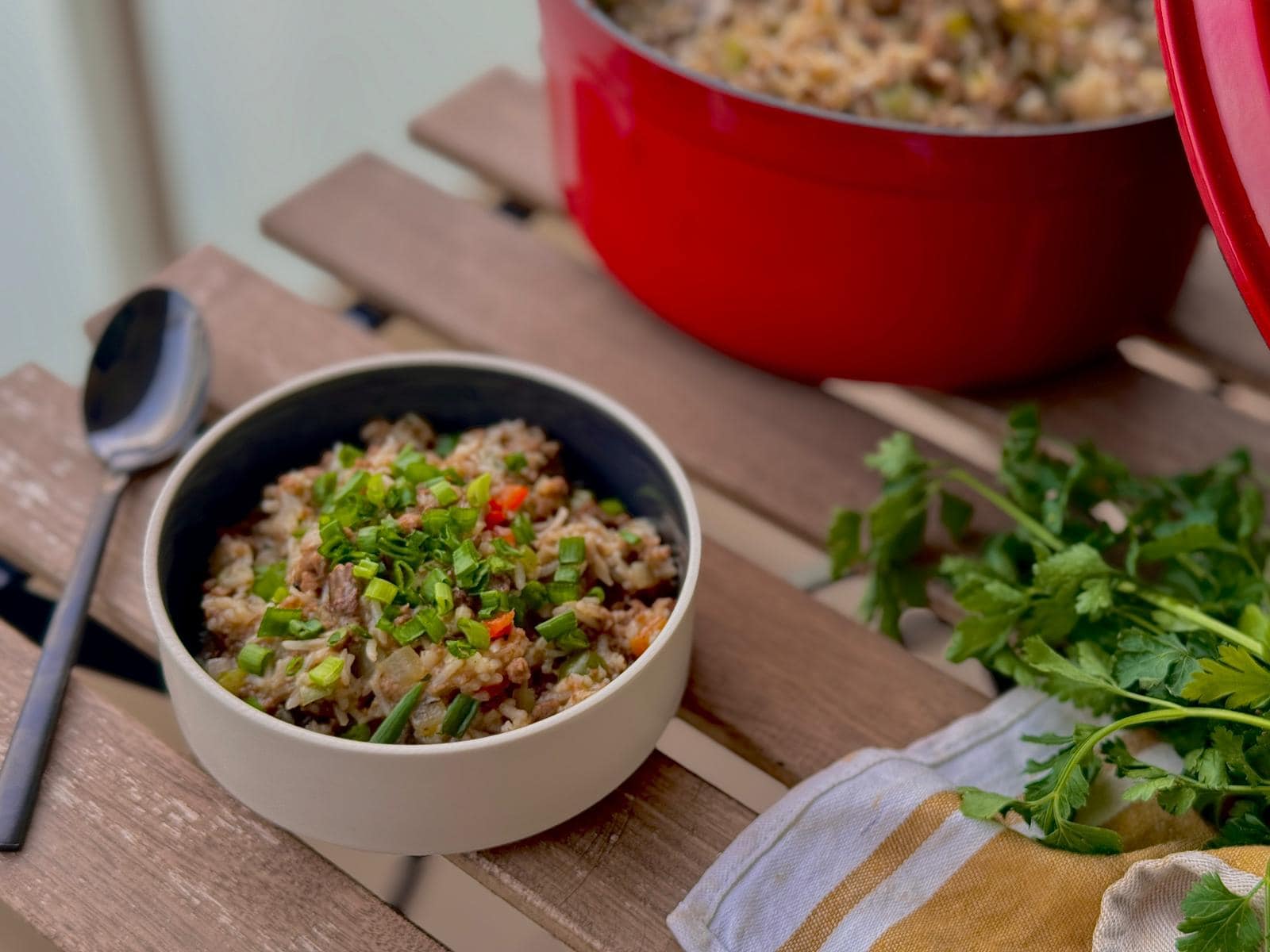My mother used to say of her Rena Ware stainless steel pots and pans, “if you look after these like I do you’ll have them your whole life.” And she was right. The pans are now classed as vintage, but Mum bought them back in the late 60s on a lay-away plan and they are still going strong today.
Mum was cooking with them every day for a decade until they were passed down to me, so I can say that stainless steel cookware will last a lifetime when looked after properly!
I wish you the same joy in the kitchen, so let me share some secrets, tips and tricks, and the best way to maintain your stainless steel cookware. Then, like mine, yours will cook perfect meals for fifty years and more!
How Long Will Stainless Steel Cookware Last?
Looked after properly, good quality stainless steel cookware can last decades. Lower quality pans or those not cared for may need replacing sooner. Things that can reduce the life of stainless steel pans include overheating, burnt oil, severe scratches, pitting, and warping or thermal shock.
Stainless steel pans with nonstick or ceramic coatings are even more susceptible to damage and will likely need to be replaced in 2-4 years.
How Do You Know When to Replace Stainless Steel Pans?
Stainless steel is one of the sturdiest cookwares out there. That is why it’s the workhorse of most professional kitchens. Durable, easy to clean, and affordable with great even heat dispersal, it can tackle any type of cooking from breakfast burritos to sautéing sea bass for dinner.
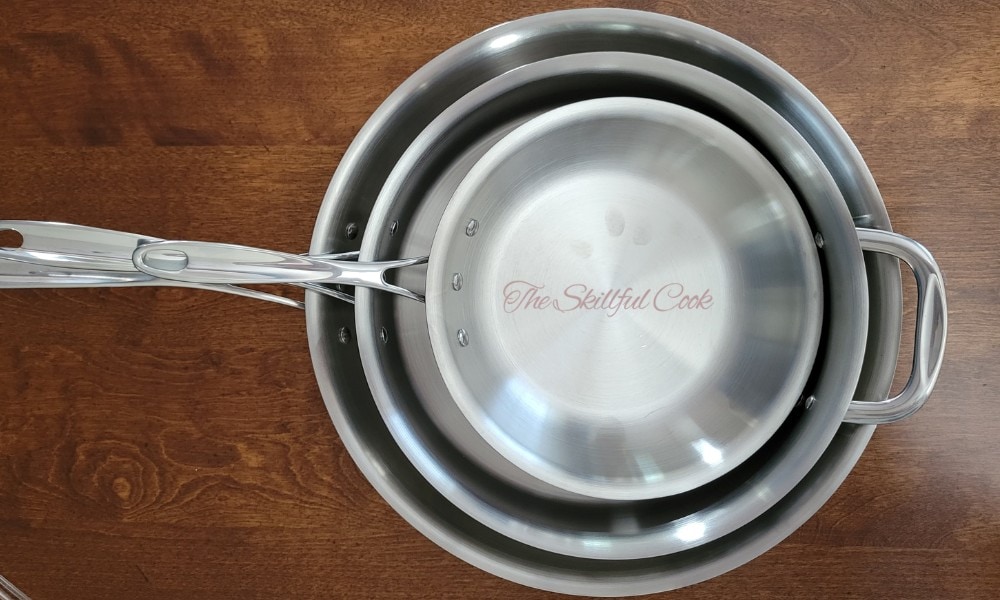
So, stainless steel is one of the cookwares with the greatest longevity. But when neglected, mishandled, or used incorrectly, stainless steel can be damaged.
Pitting, discoloration, scratching, corrosion and rusting can all affect stainless steel pots and pans. These are the main reasons you will need to replace your cookware, so let’s look at each a little more closely.
Pitting
It’s easy to tell when a stainless steel pan has “pitting.” Small dark dots appear across the base of pitted cookware. Pitting is a form of corrosion. It happens when chloride attacks the protective layer of chromium oxide that protects the surface of your pan. You can read about it in great detail along with all over forms of discoloration in How to Fix Discoloration on Stainless Steel.
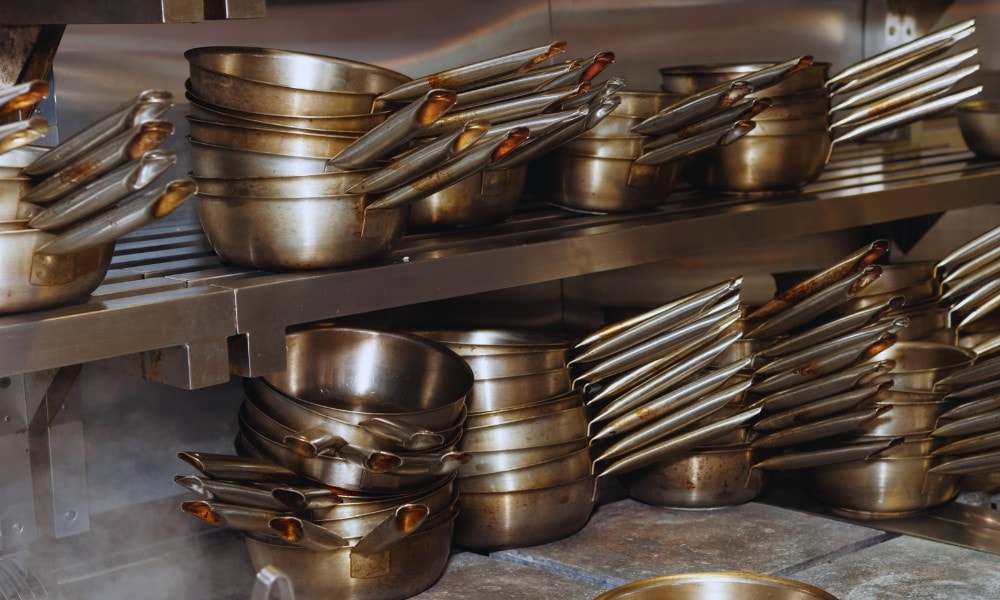
Basically, pitting happens when salt (aka sodium chloride) is added to the pan before liquids or when salt water (like if you’re making pasta) is allowed to boil dry.
Rusting
High-quality stainless steel cookware is expensive but well worth the investment. Good quality stainless steel with a minimum 18% chromium level should never rust.
Aluminum, on the other hand, can be heavily affected by rust. Most stainless steel cookware has an aluminum core. If the aluminum is exposed and not kept dry, then heavy rusting is common. The most common places you’ll see rust is on the rivets where the handles attach to the stainless steel, or on the rim of 3-ply or 5-ply pans.
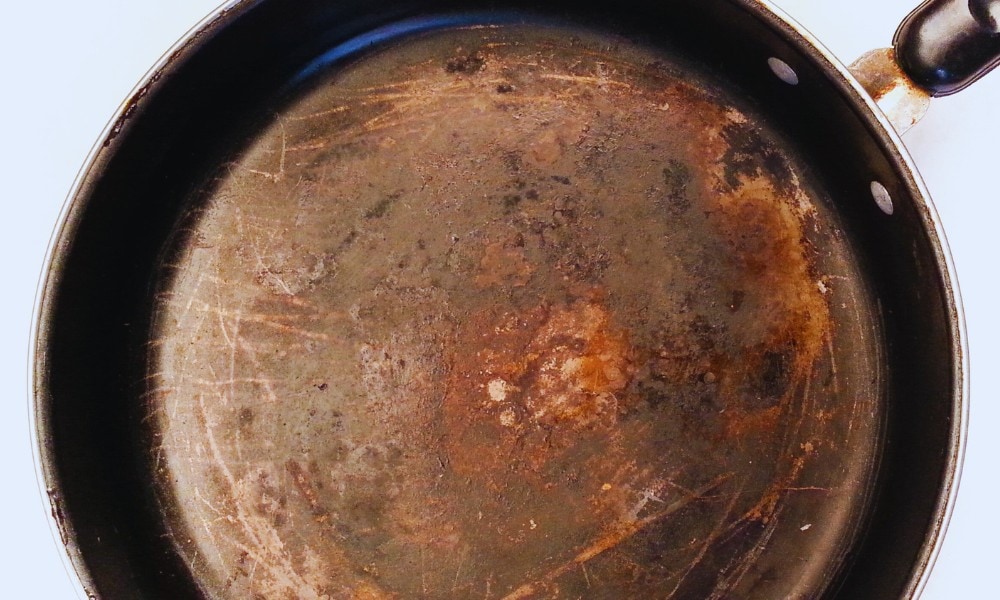
Corrosion and rust can happen if the pan has warped, buckled, or the layers have started separating, exposing the inner layer of aluminum. If this happens, the pan will need to be replaced.
Does Low-Quality Stainless Steel Rust?
Without getting too technical, the two most common grades of stainless steel found in cookware are 18/8 and 18/10. The numbers refer to its composition (chromium and nickel percentages, respectively). Stainless steel cookware starts at 18/0 grade (with no nickel) and goes as high as 18/10 grade (highest).
18/8 grade’s composition is 18% chromium, 8% nickel. It is a lower grade stainless steel that’s very popular for making budget stainless steel cookware, but it still has good rust-resistance.
18/10 grade is the highest common grade, composed of 18% chromium and 10% nickel. Considered virtually corrosion and rust-proof it is worth investing in. High-quality brands like All-Clad will include the grade in the product description.
Scratching
Heavy scratching of stainless steel can lead to corrosion, because it gets under the natural protection (in the form of oxidation) the top layer of chromium provides. Once there is a deep scratch from gouging with a metal utensil or damage from pots and pans all being thrown in on top of one another, that is where corrosion can start.
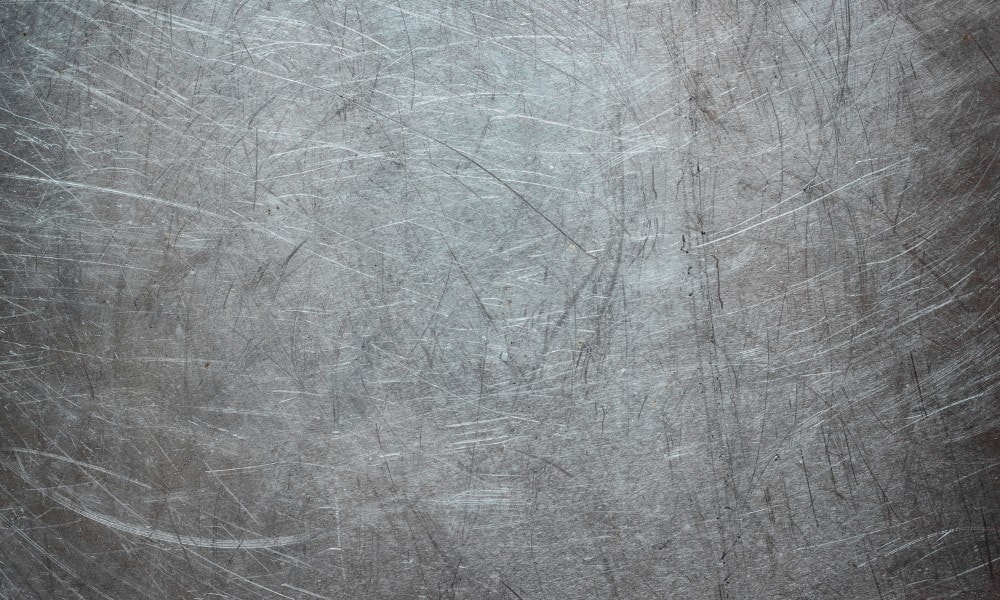
Also if pans are not cleaned properly and thoroughly dried, then any food residues or salt from foods can affect stainless steel when it gets into deep scratches.
If a Stainless Steel Pan is Scratched, Do You Have to Replace it?
Yes and no. It depends on the depth and severity of the scratch. If it’s a deep gouge and you notice discoloration or the start of corrosion then you should replace the plan. Its performance will be impacted by food catching in the grooves, reducing its nonstick abilities and making cleaning harder.
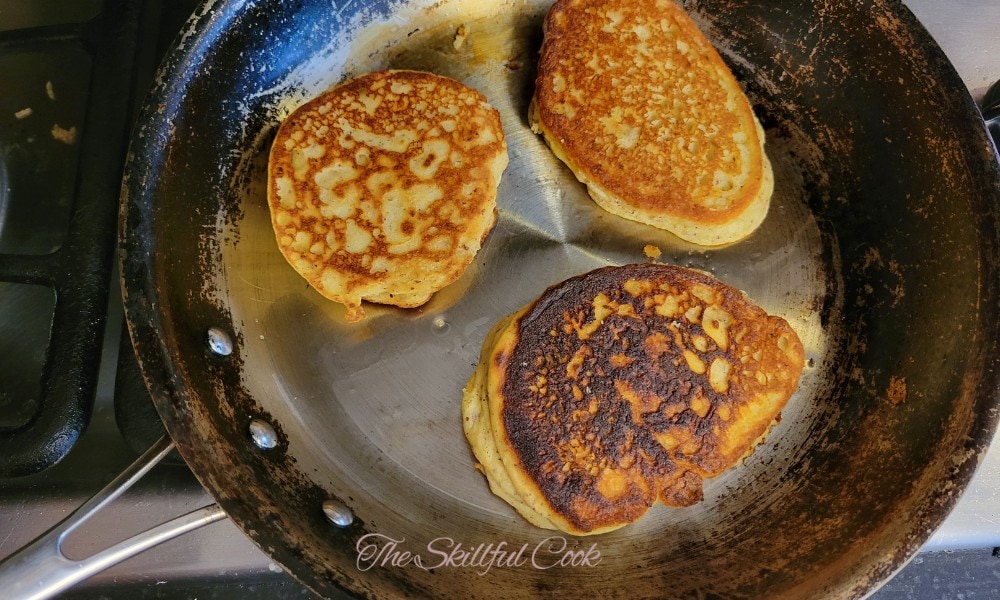
But, if it’s just shallow scratches from everyday wear and tear, stainless steel (especially the higher quality pans) can easily handle that. When I say everyday wear and tear I mean the normal small scratches of daily use, like when a metal utensil is used on your stainless steel cookware. Yes, you can use metal utensils on stainless steel cookware. But not on nonstick or ceramic-coated stainless steel pans.
Scratched Nonstick or Ceramic Coated Stainless Steel Cookware
Most brands don’t make coated stainless steel pans. But for those that do: once the nonstick or ceramic coatings on stainless steel pans is scratched, cracked, or peeling, then you need to replace the pan. The best utensils to use on ceramic coated or nonstick stainless steel cookware are silicone, wood, bamboo, or plastic/nylon.
Do Stainless Steel Pans Have a Warranty?
While high-quality stainless steel cookware brands like Calphalon, All-Clad and Cuisinart all offer limited lifetime warranties, you gotta read the fine print.
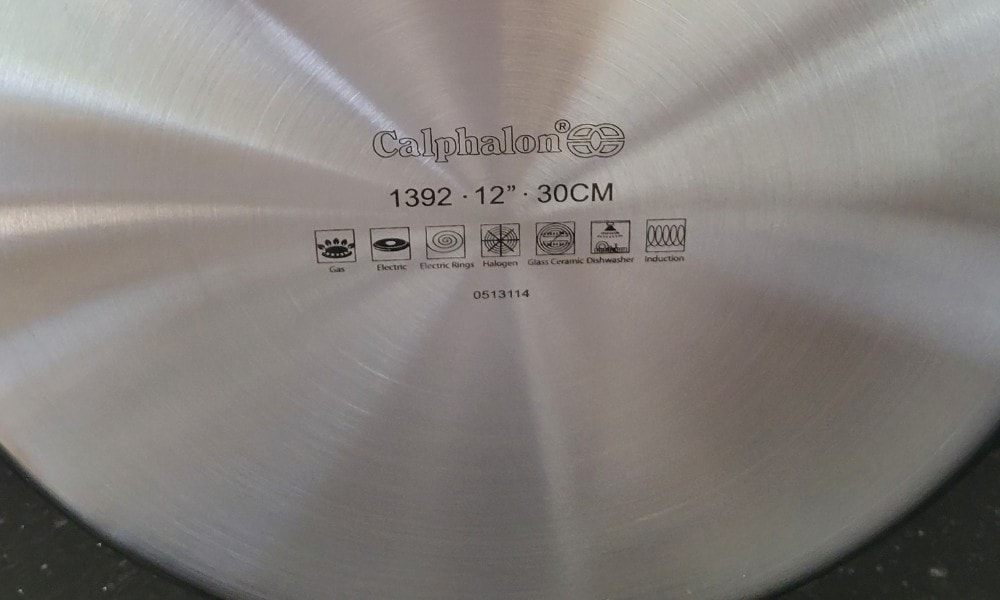
All of these warranties cover manufacturing defects, but most do not cover everyday wear and tear or damage from misuse or abuse. Incorrect cleaning, incorrect storage (neglect), and incorrect use when cooking which includes overheating, warping from thermal shock, prolonged exposure to heat when empty, along with everyday cooking wear and tear. Things like scratching, discoloration, stains, or damage caused by improper cleaning with steel wool, scouring pads or abrasive cleaners are also not covered under warranty.
Most pans come with a manufacturer’s guide detailing how best to clean, store, and cook with them. It’s worth taking two minutes to read that so your cookware will be safe.
Reading the manufacturer’s guide can also help you know when damage to your cookware – such as a broken handle – can be claimed and replaced under warranty. I’ve replaced handles on my cookware twice at no cost.
How Do You Care for Stainless Steel to Make It Last Longer?
Stainless steel cookware is easy to care for and maintain properly. From my experience, it will last decades when you do these few simple things:
Conclusion
I love my stainless steel cookware, just as my Mum did before me. So I can safely say that when looked after properly, high quality stainless steel will last generations. My mother’s set is more than cookware now; it’s a connection to her and the hours we shared in the kitchen. It’s family.
I recommend investing in a good set of stainless steel cookware, even perhaps if you have to pay it off over time. Unlike ceramic or nonstick cookware, you won’t have to replace it in a few years.
If it’s your first set, then make yourself a cuppa and spend five minutes reading How To Store Stainless Steel: Everything You Need to Know. Using those tips, your set will bring generations of your family together in the kitchen bonding over wonderful meals.
Do you have any memories like this? Would you like to? Please let us know your thoughts in the comments below and if you have any questions we’d love to hear them so pop them in there too.

